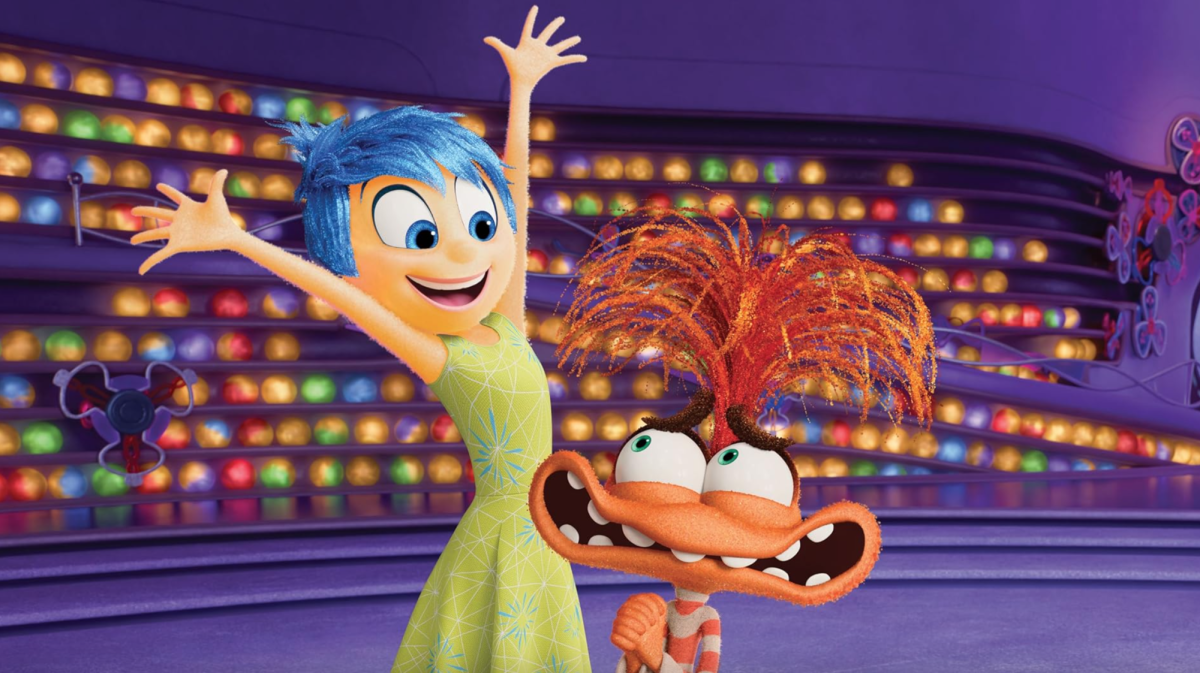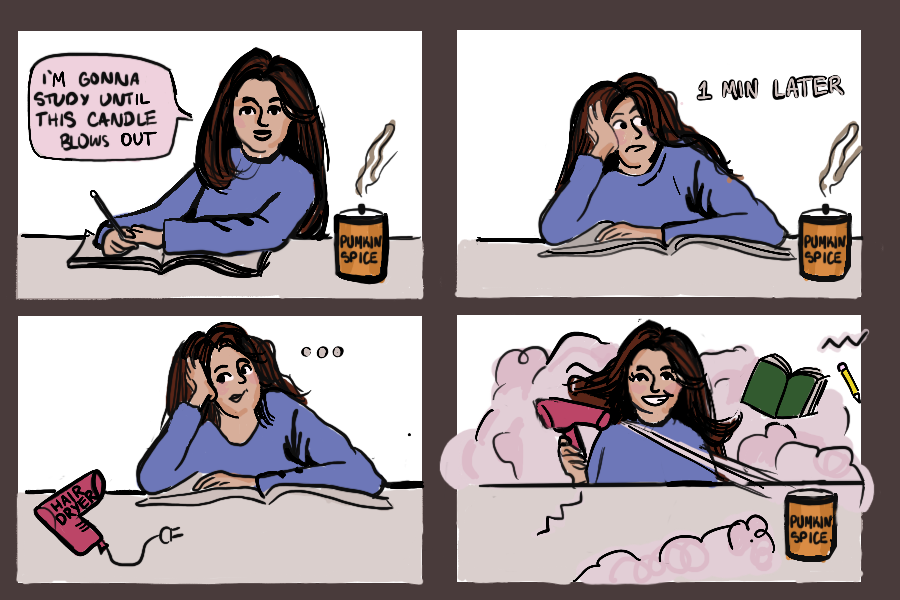Rating: 8/10
“Inside Out 2” is the long-awaited sequel to Pixar’s 2015 hit “Inside Out.” Directed by Kelsey Mann, the film explores the complexities of teenage emotions as the protagonist Riley, now 13, navigates puberty and new challenges.
The movie’s premise is strong, and its execution succeeds far more than it fumbles.
It begins with a triumph — Riley wins a championship hockey game alongside her best friends, Bree and Grace. This victory catches the attention of a high school hockey coach, who invites the three to a skills camp. The rest of the film unfolds over the duration of the three-day camp.
Inside Riley’s mind, the ‘puberty’ alarm signals an expansion at headquarters, including four new emotions: Anxiety, Envy, Embarrassment, and Ennui (boredom). The original emotions — Joy, Sadness, Disgust, Fear, and Anger — are taken aback by these new arrivals.
Get The Daily Illini in your inbox!
One of the movie’s strengths is its portrayal of the new emotions. Anxiety, depicted as an overthinking, nervous, hyper personality, captures the stress and uncertainty of teenage years. Envy, Embarrassment, and Ennui also bring new dynamics to Riley’s emotional landscape. Ennui, in particular, stands out as a character that perfectly personifies teenage boredom and disinterest, constantly glued to a cell phone.
Early on in the movie, Joy uses a new machine to launch bad memories to the back of Riley’s mind, protecting her from remembering them. However, Anxiety quickly takes control of Riley’s brain, imprisoning the original emotions in Riley’s vault of secrets and using Joy’s machine to send Riley’s sense of self to the back of her mind. This ‘sense of self’ includes core beliefs like “I am a good person” and “Mom and Dad are proud of me.” The chaos caused by the new emotions is depicted with humor and maturity, making the film enjoyable for viewers of all ages.
This leaves Riley primarily driven by Anxiety, Envy, Embarrassment, and Ennui. She struggles with her friendships, particularly with Bree and Grace, as Anxiety causes rifts and misunderstandings. Anxiety pushes Riley to impress the older hockey players, dismissing her true friends and focusing only on future achievements and social status.
As expected in most Disney Pixar movies, the story concludes with a happy ending. The original five emotions escape the vault and retrieve Riley’s sense of self just before Anxiety completely takes over. By the end, they realize they must use the bad memories to travel back to headquarters. These bad memories are then planted into Riley’s sense of self, teaching a valuable lesson about not suppressing memories but accepting them as part of who we are. In the end, all the emotions learn to work together harmoniously, and Riley, Bree and Grace are reunited as best friends.
There are some minor plot holes, however, that may leave viewers scratching their heads. For example, where were these new emotions in the parents’ minds during the first movie? This question is partly addressed in a credit scene where Anxiety appears briefly in the minds of Riley’s parents, but it still leaves some unanswered.
The movie also doesn’t explain why Riley’s emotions don’t physically resemble her, while her parents’ emotions and those of her friends do. This minor discrepancy is never fully explained, which may be confusing for viewers who have seen the first film.
The movie explores the idea that emotions can feel other emotions, which adds a layer of complexity. For example, Joy experiences anger and sadness, and Anger feels sympathy. This concept deepens the characters, making their interactions more engaging.
Visually, “Inside Out 2” is stunning. Pixar’s animation continues to impress with vibrant colors and well-designed settings. The new expansions of Riley’s mind are creative, adding to the movie’s charm.
The voice acting is top-notch, with the cast delivering strong performances. The new emotions are particularly well-voiced, bringing their unique characteristics to life and adding depth to the story.
“Inside Out 2” appeals to both kids and older teenagers. From the perspective of someone who was a kid when the first movie came out and is now a college student, it’s intriguing to see certain emotions one feels at the beginning of their teenage years play out in a film, now with the perspective of knowing how to deal with these emotions.
While there was no mention of the beloved Bing Bong who died in the first movie, “Inside Out 2” hints at a potential third movie. Twice in the film, there is a brief appearance of Nostalgia. When she first appears, Anxiety quickly tells her to go away, noting she has another ten years, two graduations and a best friend’s wedding before she can come out. Nostalgia makes another appearance toward the end, where she is quickly told to go back downstairs by all the emotions.
So what other emotions could be in store for Riley if there is to be a third movie? The feeling of love or thefeeling of being lost as Riley navigates her later teenage years, or perhaps Interest as new ideas and hobbies form, or even Contentment as one can be happy and at peace without the overwhelming feeling of Joy.
In the end, “Inside Out 2” is a good sequel to the original movie and is worth watching for people of all ages. You will feel the rollercoaster of emotions watching the movie, and for those who might be older and have experienced their early teenage years, it will have relatable moments and might even bring out some nostalgia. Pixar once again delivers a heartfelt and entertaining film that resonates with a broad audience.







